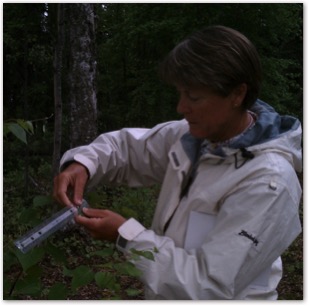Wednesday, June 08. 2011

THEME: DATA COLLECTION & ANALYSIS
We practiced a few Phenology protocols today (See Today’s Image). These protocols are established within the Seasons and Biomes component of the GLOBE (Global Learning and Observing to Benefit the Environment) Project. GLOBE trains teachers in a variety of observation protocols that can be translated for students in the classroom. Students learn to collect real scientific data that can be posted to an international database supported by the GLOBE Project. Using the established protocols will allow students to compare their data to other student’s data from around the state, country, and world. Students can make comparative analyses between seasons, locations, or among other GLOBE data sets. In time, this international database may provide a historical record of phenological responses to climate change. You can learn more about the GLOBE Project, including the Seasons and Biomes component here: http://globe.gov/.
INTERACTIVE ACTIVITY: Collecting Data for Analysis
Take a few minutes during your next trip to the beach to grab your sand shovel and dig a few holes. Try digging a hole near the high tide line (preferably digging at low tide). Dig until you reach water and collect a sample in a cup. Next, walk 3 meters (~10 feet) toward the dune line and dig a second hole. Dig until you reach water and collect your second sample. Predict how these 2 samples might be different based on your observations using as many senses as you can. If you decide to use your sense of taste, be sure to dip your finger into each cup for a very small taste. Make inferences to explain the differences you notice between each sample. What would you expect to observe if you dug a third hole near the edge of the dune line? What other questions come to mind as you analyze your water samples?
SAFETY TIP: Don’t forget to fill in the holes when you have completed your investigation.
COMING TOMORROW: Tubes for Frosty

